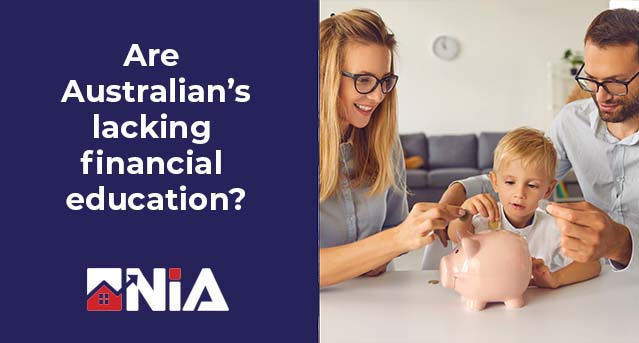I bought my first home when I was in my early 20’s and borrowed $86k at 17% interest rate. At that time, I had no idea what I was doing and I’m not ashamed to say I got lucky. It was however that property that sparked my interest to educate myself in finance, wealth and property. Fast forward to today and my passion is educating Australian’s and improving the financial literacy of Australian’s, one family at a time.
Now unfortunately, despite our teams’ best efforts the financial literacy of Australian’s is decreasing. A recent study revealed that only 25% of people could correctly answer basic questions relating to interest, investing, finance and inflation. In addition to this, over 40% of the Australian population wished they’d been educated more about money as a child. Whilst I am considered well educated in financial products, things might have been completely different for me had I not fallen into my first property all those years ago. Thinking back to my school days, I may have learned a lot of useful things but I’m certain anything related to superannuation, tax returns and deductions, comparing banking products and how a mortgage works were not in the curriculum. And before I ended up doing what I do, I honestly didn’t even know how a credit card worked!
In addition, technology had exposed young adults to more complex financial decision making earlier in life. With the finance world rapidly changing with the likes of Afterpay and other finance-based products, without appropriate guidance it can be a slippery slope to financial ruin.
This year I am proud to say our company started a podcast aimed at answering the questions of everyday Australians around finance, wealth and property. We invite anyone wanting to learn more about the financial markets to listen to “Equity Street” on Spotify & Apple podcasts.
Listen here: https://spoti.fi/3yjuyTn
Take the quiz of financial literacy
The following 5 questions were asked to measure the financial literacy of Australian households.
Post your answers below:
- Suppose you put A$100 into a no-fee savings account, with a guaranteed interest rate of 2 per cent per year. You don’t make any further payments into this account, and you don’t withdraw any money. How much would be in the account at the end of the first year, once the interest payment is made?
- Imagine now that the interest rate on your savings account was 1 per cent per year and inflation was 2 per cent per year. After one year, would you be able to buy a) more than today b) exactly the same as today, or c) less than today with the money in this account?
- Do you think that the following statement is True or False? “Buying shares in a single company usually provides a safer return than buying shares in a number of different companies.”
- Again, please tell me whether you think the following statement is True or False: “An investment with a high return is likely to be high risk.”
- Suppose that by the year 2020 your income has doubled, but the prices of all of the things you buy have also doubled. In 2020, will you be able to a) buy more than today b) exactly the same as today, or c) less than today with your income?

